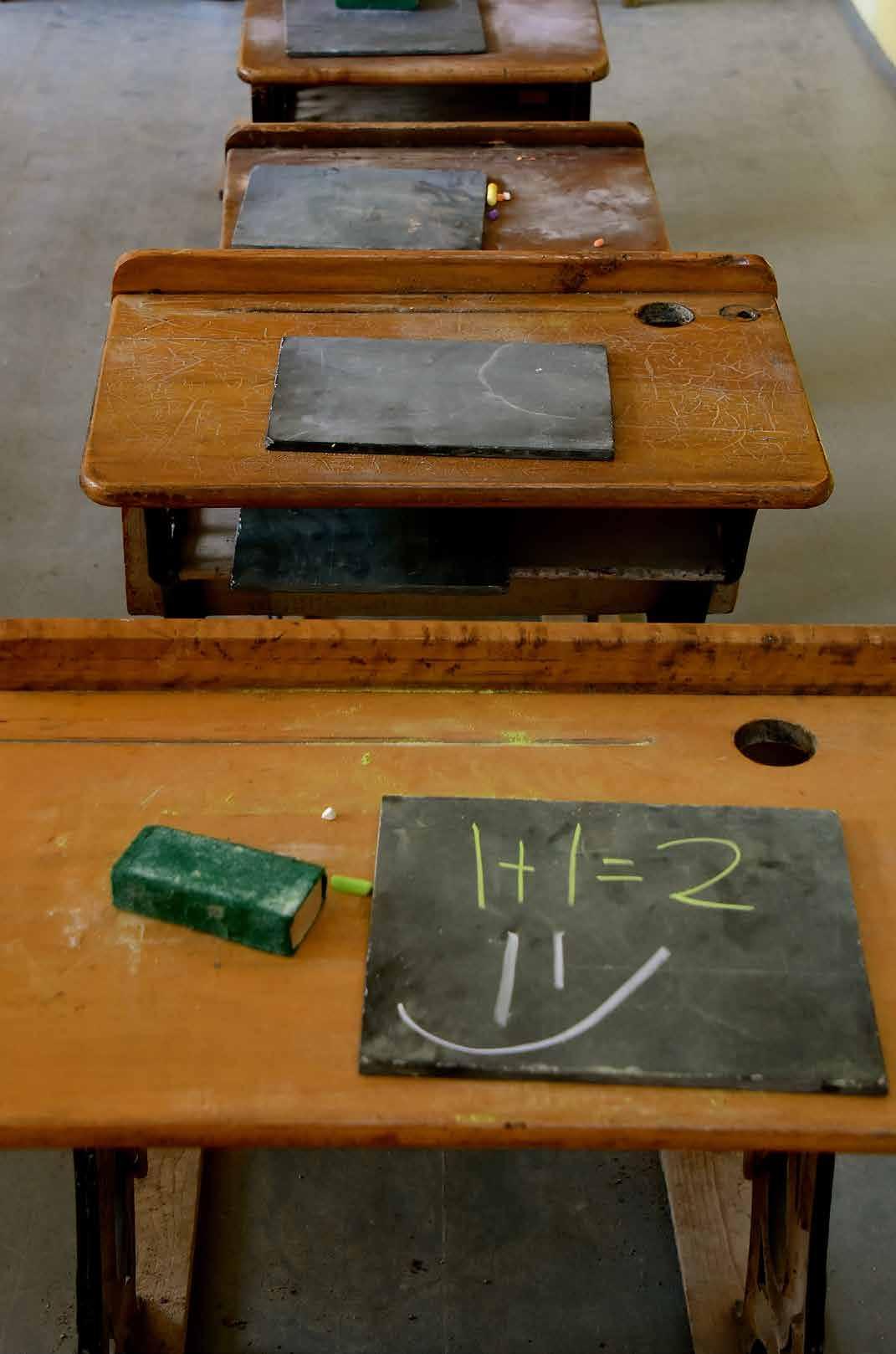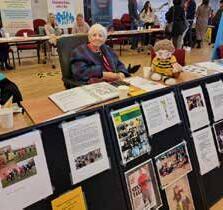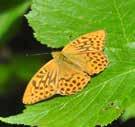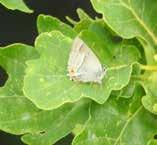


We work in Bamford, Bradwell, Castleton, Eyam, Foolow, Great Hucklow, Grindleford, Hathersage, Hope, Little Hucklow, Nether Padley, Tideswell, Upper Padley & all surrounding areas
All Work Guaranteed
Highly Experienced Clear Pricing







We work in Bamford, Bradwell, Castleton, Eyam, Foolow, Great Hucklow, Grindleford, Hathersage, Hope, Little Hucklow, Nether Padley, Tideswell, Upper Padley & all surrounding areas
All Work Guaranteed
Highly Experienced Clear Pricing




mortified, not sure I went back after that!! I also remember Mrs Ingram being equally as encouraging to the boys to join in with the Netball team – which was unheard of before her.
These are the things that stick with you in those formative years – tolerance and acceptance - and whilst I can appreciate that this was only my experience, it really bothers me that not everyone has that same experience. When did it change? Why should it be different for girls and women? Don’t even get me started on Mary Earps and Nike and why her shirt isn’t available to purchase!? SHE WON THE GOLDEN GLOVE! Before anyone even thinks it, it is about nothing else other than commercialisation and sales and they didn’t think they’d sell enough of her shirts to warrant production – not so bothered about equality then are you Nike?! And whilst we’re on the outrage train – let’s also take a second to have a think about how all our senior dignitaries have no trouble clearing the diaries for male football events held in recent times, whereas our Lionesses will have to make do with ‘rousing’ PR video….hmmmm! Thank goodness for the Spanish Monarchy putting in an appearance!

I can’t change the world anymore, I probably can’t even change your perception on this, if it’s different to mine but if I had been lucky enough to have a child and they had wanted to set the world alight, they would have had no bigger champion in their corner, regardless of their gender. Afterall, we’re all only guests here for a short while, is it not our duty to ‘do better’ for each generation that follows us?
Happy Reading!

As the new school year starts, I thought I’d take a look at what back to school meant in the 1970s/80s when I went to school.
Back to school preparation in the 70s and early 80s always started in the last couple of weeks of the summer holidays with the obligatory trip to Marks and Spencer’s for navy knickers and a selection of socks. For the younger readers, the sturdy navy (or sometimes dark green) knickers were an absolute necessity under the (very) short, pleated skirts we girls had to wear for sports lessons. Their size and construction, being of thick stretch fabric, not only preserved one’s dignity but also kept your bum warm - particularly on those cold, wet days on the hockey pitch!
School uniforms were, for the most part, obligatory, but I don’t recall that schools sold their own branded clothes as seems to be the case now; rather there was a strict code of colours and styles that were purchased from “recommended suppliers”. School ties for both girls and boys were pretty standard (mine was black and gold stripes) and the school badge was available as a sew-on for blazers.
A new school bag, pencil case (or box), and various items of stationery were on the “must buy” list and were the chance for kids to inject a bit of personality into proceedings. I particularly remember things like “troll” pencil toppers, pencil cases that zipped all around and had pens, pencils, protractors, set squares and the like all secured by elastic strips. And those biros with multiple coloured ends… oh, and scented rubbers (erasers) - I can only wonder why we thought they were a good idea!
The only “tech” most 70s and early 80s school kids possessed was a calculator; if you were really fancy, that would be a “scientific calculator”, which enabled you to calculate sines, cosines, and logarithms, And who remembers carefully covering the new exercise books in wallpaper? Often using the
reverse side to hide how hideously garish the “right” side was! I seem to recall woodchip and brown parcel paper were often used because of the lack of pattern. A lack we usually rectified with our own artwork.
Once in the classroom, there were chalkboards and sometimes overhead projectors which used transparent sheets of plastic, often bearing text and images hand drawn by the teacher. Interactive whiteboards, computers, tablets, laptops - in fact, much of the technology now common in schools were still a long way off. Even watching an educational TV programme or video generally involved wheeling in the school’s TV and video player on a custom-built trolley, a TV which was probably shared by a year group, if not the entire school.
If you’ve read this article nodding your head and reminiscing, you are probably of a similar age to me. Our school days are well and truly behind us, and we look back with rose-tinted glasses at our past…even our school days!







Charity Number: 700058
We aim to help amputees, their families and friends to adjust to the loss of limbs. We aim to help our members to meet up and support each other and also to provide social and educational activities.
THE SERVICES WE OFFER:
• We work in partnership to promote independence
• Support service – supporting people
• Promoting independence, confidentiality, rights, equal opportunities
• Review services
• Liaise with family, other agencies, older people, young people, people with a disability


• Improve quality of life
• Provide opportunities for involvement and access to activities
• newsletters
• monthly meetings
Come
WASP NESTS DESTROYED QUICKLY & EFFECTIVELY RAPID RESPONSE - USUALLY SAME DAY SERVICE HIGHLY COMPETITIVE RATES - NO HIDDEN EXTRAS

COVERING SHEFFIELD, ROTHERHAM, CHESTERFIELD, SOUTH YORKSHIRE & NORTH EAST DERBYSHIRE

ALL OTHER PEST CONTROL SOLUTIONS AVAILABLE PLEASE ENQUIRE
CALL OR TEXT 07885 825904
www.waspkill.co.uk
Chartered & State Registered Physiotherapists Registered with all major insurance companies


Clinics in Hope & Totley
Back & Neck Pain - Sports Injuries
Joint Problems - Muscle & Ligament Strain Workstation Assessments - Acupuncture
Post Operative Rehabilitation
E: hellohope@activphysiotherapy.co.uk

W: www.activphysiotherapy.co.uk
A: Bank House, Market Place, Hope, Hope Valley. S33 6RH.
the proof is acceptable as shown. please contact ...Helen. on 01246 416027 immediately and a further proof will be sent.
Approved subject to amendments, as indicated may be some colours shown printed version
Signed .....................................................................
Date ......................................












Method:
1. Preheat your oven to 200°C/fan 180°C/gas 6.
2. Put the squash, red pepper and onion in a medium-size non-stick roasting tin or ovenproof dish, sprinkle over the garlic granules and spray with low-calorie cooking spray.
3. In a small bowl, mix together the tomato purée and mango chutney. Brush this mixture all over the pork, then sit the pork on top
Juicy sticky pork and tasty roast veg combine to make this delicious, sticky, mouthwatering feast. Enjoy!
of the vegetables and roast for 30-35 minutes or until the pork’s cooked.
4. Take the tin out of the oven and set the pork aside on a plate to rest, loosely covered with foil. Return the veg to the oven for 5-10 minutes or until lightly charred. Slice the pork and return to the tin. Scatter over the watercress and serve with a drizzle of yogurt.

Ingredients:
• 500g frozen butternut squash chunks (or ½ large squash, if you want to prepare it yourself)
• 1 large red pepper, deseeded and cut into chunks
• 1 large red onion, roughly chopped
• 1 tsp garlic granules
• Low-calorie cooking spray
• 2 tbsp tomato purée
• 2 level tbsp mango chutney
• 1 lean pork tenderloin (about 300-400g), visible fat removed
• Small bag of watercress, to serve
• Fat-free natural Greek yogurt sprinkled with black pepper, to serve
Syns per serving: 1.5




September is the time of year that signals the end of the freedom of summer holidays and the start of a new school year.



I remember as a child when children trudged to their new classrooms in squeaky shoes and blazers several sizes too big because they would “grow into it”.

Milk arrived during the morning in a crate outside the school entrance in small bottles that held a third of a pint. It was at the mercy of the elements so in winter it froze, and the silver tops lifted off as the milk expanded upwards from the bottle. The crate had to be put next to the radiator to defrost. Worse was in summer when the milk became tepid sometimes with curdled cream. Occasionally you might find holes in the silver tops which had been pecked by blue tits getting at the cream. I was never a milk monitor, or any other sort of monitor, but their job was to distribute a bottle to each child in the class at morning break, together with a small straw.
School milk continued until 1971 when Margaret Thatcher earned the nickname of “Thatcher, Thatcher, milk snatcher” by ending the provision of free school milk.
School dinners were again contentious. Free for poorer children, subsidised for others. I remember the large aluminium serving dishes and the water jugs. Chocolate concrete and pink custard, Manchester tart and frog spawn tapioca. Lumpy mashed potato, stringy beans and globby gravy. I rather enjoyed them.
The food was served by kindly dinner ladies who smelled like cigarette smoke and mint imperials and supervised after lunch in the playground and nap time for little ones in put-up beds in the hall.
When we do our “Mealtime Memories” session with All Around the Shire, we often hear reminiscence about back-toschool memories. Invariably milk and school dinners feature frequently. What do you remember?











































Thursday 28 September 4 30 pm- 6 30 pm
More information on Year 7 entry:
online: www.ladymanners.derbyshire.sch.uk
email: info@ladymanners.derbyshire.sch.uk
phone: 01629 812671


"Pupils are proud that they attend Lady Manners School"
"Pupils enjoy positive relationships with each other and sta "
"Pupils...appreciate the support, guidance and care that they receive from their teachers"
"Ensuring pupils' positive mental health and well-being is a key priority for sta "
"There are lots of opportunities for pupils to widen their experiences"

Ofsted Good School March 2020



1JA
Thousands of Derbyshire residents have found honest, reliable traders and services in their area, thanks to Derbyshire County Council’s Trusted Trader scheme.
From plumbers, electricians, gardeners, joiners and decorators to electric vehicle charger installers, accountants, dog walkers, removal firms and will writers – it’s easy to find a registered Trusted Trader to get your job done. And they’re all checked by trading standards.
Visit www.derbyshire.gov.uk/tt or Call Derbyshire on 01629 533190.

You don’t have to be a cat person to fall for the million-plus selling The Travelling Cat Chronicles by Hiro Arikawa. Anyone who has loved an animal will recognise the warmth of this story of that relationship and what it gives us. The Travelling Cat is funny and heart-breaking and generally makes you feel good. Plus it’s set in Japan, a fascinating country. And oddly like the brilliant Studio Ghibli films gives you a real feeling for the culture and people and countryside.
It’s a quirky tale following Nana, the cat, who is taking a road trip sitting at the side of his much loved owner Satoru who is keen to visit some old friends. Nana is not sure where he’s going but who cares, if it means he gets to sit in the front seat of Satoru’s silver van. It’s a gentle book and says a lot about people and their need for friends and also solitude and generally what makes them tick. It will definitely tug at your heartstrings but not in a cheesy way.
It’s obvious Arikawa knows a lot about cats – but he’s pretty fine on human beings too. Different, but good.

possible.




























1 “But I’m zany!” he blurted out in old Istanbul (9)
7 Crises the bottleopener precipitates for journalists (7)
13 Allots, like signals? (7)

18 Acres of hay I made from a lounge seat (4,5)
Pitcherwits® are crossword puzzles where some of the clues are in pictures.


Sound easy? It’s not called “Pit-your-wits” for nothing! The mixture of cryptic and picture clues, combined with Professor Rebus’ unique sense of humour, will keep you entertained for hours.


Across
5 Acquire music from non-flyer (3)
6 Pinch a bit of drink (3)
10 Adjudicator borrowed to host ball (3)
11 Member joining the queue-jumpers club? (5,2)
12 Allow wallet to be thinned down (3)
16 Have some Brownie points for this answer! (3)
17 Go wrong with cherry pip (3)
Down
2 Carefully sizes up, but it’s no use for fasteners (4)
3 She’s well into reform! (4)
8 Basic, low nature of a fool (5)
14 That wink you have, it’s somewhat dark (4)
Down
1 The perfect places for children’s sleepovers? (8)
4 Tom to persist in trying to see Beatrix film (4,6)
5 Rioting bandoleers can be supported (10)

9 Berlin in trouble? Rubbish, that’s what it’s for! (8)
15 Ice cream follower in cowboy’s lasso dance (4) ANSWERS
This puzzles has been devised by the brilliant Professor Rebus. For more of his puzzles visit www.pitcherwits.co.uk

















very so often to feed on nectar at ground level. Generally, quite rare they seem to have increased. However, both species are hard to spot until you get your eye in, and so are certainly worth watching out for.
The Comma is a member of the spectacular Vanessid butterflies, which include red admiral, peacock, and painted lady, and this is a species which is much increased in recent decades. All this group routinely feed on Buddleia which again makes them easy to spot and to count. Other less commonly seen butterflies are the moth-like skippers and whilst there are several species, the most likely to be seen are small skipper, large skipper, and the relatively recent arrival, the Essex skipper. Another stunning species also increasing, is the bright sulphur-yellow brimstone. However, this insect may be restricted by its larval foodplants, the alder buckthorn and buckthorn. Because of this, many butterfly enthusiasts are now actively planting these shrubs in suitable places such as parks and gardens.

I suspect that 2023 will go down as a remarkable year for our region’s butterflies. Whilst the weather has frequently been wet and cool, there have been some hot sunny periods too. Whatever the cause, the conditions have triggered the spread of many of our butterfly species. Some of these changes, such as the now commonplace speckled wood, are clearly long-term movements northwards. The holly blue is another formerly uncommon insect that is now one of our most frequent fliers in woods, parks, and gardens. Other changes see one species (like wall brown) drop and another close relative (say, hedge brown) increase. The reasons are not always obvious and may relate to weather and climate, to habitat loss or condition, or even to parasites and diseases. The ringlet is a grassland species that has increased in numbers dramatically. But this year has witnessed some remarkable occurrences with for example, fritillary butterflies doing well across the region. One stunning species, the silver-washed fritillary, has done well in wooded parts of the Peak, such as the Dales, but also in the eastern parts of North Derbyshire like Whitwell Wood.
Records have come in north to Sheffield’s southern fringe. This is a very large, orangebrown butterfly and a strong flier, and so is very noticeable, and worth recording. Less so, but also doing very well are two species of the upper tree canopy, the purple hairstreak on oaks, and the white-letter hairstreak on elms. These rather small butterflies flit around the high treetops where the males hold territories and await their females but descend

Whilst planting foodplants in suitable places helps species to spread naturally, there is also a movement of ‘guerrilla lepidopterists’ now actively introducing rare butterflies to new sites. These places are generally sites that once held them or at least where the enthusiasts think they should be (which is not always the same thing!) Most introductions simply fail and some, like speckled wood, probably get ‘lost’ within the natural spread that is occurring. However, the actively remains contentious with some experts resigned to it happening and others pretty much opposed. There are also, of course, officially sanctioned introduction programmes which are formally planned, funded, and monitored. The guerrilla lepidopterists say these are too little and too slow. I will leave you to make up your own minds!

With over 20 years’ experience in designing, manufacturing and installing bespoke garden buildings throughout the UK, you can trust that Cabin Master will deliver the perfect space for your garden. And the possibilities are endless...



• Office Space

• Family Room
• Arctic Cabins BBQ Huts
• Hot Tub and Swim Spas
BOARDS

07856 062 882 01433 764 011
· Decking
· Shelves · Planters
· Raised beds

£16
Prompt Delivery
Contact Kevin at KS Timber on 07919 273909


LUKE JONES
TREE PRUNING
TREE FELLING & REMOVAL
STORM DAMAGE CLEAN UP
STUMP GRINDING

HEDGE TRIMMING
Top Tip:
Lots of this year’s planting will keep going right up till the first frosts, so it’s always worth continuing to deadhead and feed your pots and baskets until then.
But if you’re looking for some autumn colour to fill bare patches, heleniums come in a gorgeous range of reds, yellows and oranges. Keep them well watered and add some garden compost to the soil. Sedums are also lovely and bright and both should survive over the winter. Autumn heathers provide good value – but do remember they need ericaceous compost.
As the weather starts to cool, cut off remaining trusses from tomatoes and bring them indoors to ripen.
Pot up tender perennials such as fuchsias and osteospermum which you want to keep and bring them indoors into cool rooms to overwinter. You can also take cuttings, taking about 3 to 4 inches, cutting below a joint and taking off all but the top leaves, dip in rooting compound and push into potting compost around the edge of a small pot. Again you can leave outdoors until the frosts threaten but then bring in for winter
Rake the thatch from lawns, aerate with a garden fork and re-seed while there is still warmth in the ground to help the seed take.
Plant bare root wallflowers now – it gives them a head start for next year











